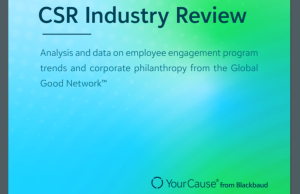The gap between skills possessed by employees and those needed to function going forward has widened since 2021, and executives are increasingly concerned their employees do not have the right skills to execute on strategy.
Nearly half (49%) of learning and development professionals say executives have doubts about the current skillsets of their employees. That’s up from 40% in 2021, and is a level likely exacerbated by the decentralized office phenomenon that resulted from the coronavirus pandemic. Another 46% think that the skills gap is widening, up from 42% saying so in 2021, according to data in The Transformation of L&D; Learning leads the way through the Great Reshuffle, a report from LinkedIn Learning.
What LinkedIn is calling the “Great Reshuffle” is leading to a redefinition of work and skills. LinkedIn members report the skills needed to remain in their position, whether technical or theoretical, have changed by 25% between 2015 and 2021. The report authors anticipate this trend will continue, with members’ skills within the same occupation changing by 40% by 2025.
The Great Reshuffle is a combination of the pandemic and economic and social tumult that has led individuals to prioritize flexibility and fulfilment. In response to this phenomenon, organizational strategic thinkers are reconsidering their workforce models, values and culture, with increasing influence from employees, according to the report’s authors.
One area in which organizations are transforming is the approach toward learning and development, with a focus on more holistic approaches set by human resources.
This transformation places several burdens on HR professionals. They will need to understand opportunities and challenges, especially those presented by digital transformation and an ever-widening skills gap. Providing skills will increasingly become central to employee retention, well-being, leadership, diversity, equity and inclusion (DEI) considerations and other priorities.
The most successful learning and development programs will incorporate a mix of hard and soft skills, ranging from collaboration and communication skills to budgeting, managerial, listening and continuous learning, according to the report’s authors.
After a two-year period for coronavirus-related disruptions, human resources staff increasingly have commandeered upper management’s attention, with 87% saying they’ve had a “great deal” of involvement in helping their organizations adapt to change, according to a LinkedIn survey 2,054 individuals involved in learning and development and/or human resources throughout the world.
Nearly three-quarters believe learning and development is increasingly being looked at from a strategic perspective, and 62% say learning and development efforts are focused on rebuilding or reshaping their organization.
The real power within an organization is with budgets, however, and learning and development professionals are bullish in this regard. Nearly half (48%) expect to have more spending power during 2022, the highest percentage expressing that sentiment in six years.
Learning and development specialists hold several top priorities for their 2022 efforts. Nearly half (49%) mentioned leadership and management training, followed closely by upskilling and re-skilling employees (46%). Just over one quarter (26%) cited digital upskilling or transformation, and the same percentage mentioned DEI initiatives.
While some learning and development programs have been in place to achieve these priorities for a while, others, especially newer concerns, will be ramped up this year. Asked what was likely to be deployed during 2022, as opposed to 2021, the most-frequently mentioned was DEI programs: 45% of respondents plan such initiatives for 2022, up from 34% in 2021. Implicit-bias training will be deployed by 18% of respondents this year, up from 16% in 2021.
Other programs mentioned include leading through change programs (42% in 2022, up from 37% in 2021), large-scale upskilling or reskilling programs (41%, up from 31%) and in-person training programs (41%, up from 25%).
Longer-recognized workplace issues saw only modest anticipated year-over-year gains: the 30% of respondents who anticipate digital fluency or transformation programs during 2022 is only a tick above the 29% who did so in 2021, and the virtual lunch-and-learn programs, a pandemic staple, were anticipated by 29% in 2022, compared with 28% in 2021.
Beyond individual initiatives, however, there is a larger message: within organizations, learning is becoming a rote part of workers’ daily life. Most learning and development pros (85%) expect to see either the same amount of on-the-job learning or more learning through organizational projects or gigs.
A full copy of the report is available here: https://learning.linkedin.com/content/dam/me/learning/en-us/pdfs/workplace-learning-report/LinkedIn-Learning_Workplace-Learning-Report-2022-EN.pdf










